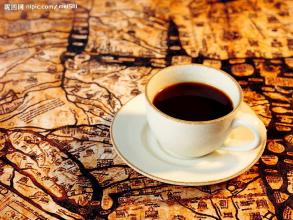Introduction of Burundian Coffee Bean Burundian Coffee Flavor Manor
Country of production: Burundi
Grade: AA, FWS
Planting area: Buyendi
Brand: Buyendi
Treatment method: wet treatment
Appearance: 1d/300gr, 16-18SCR
Breed: Jackson Bourbon
Note: Burundi coffee has been in chaos for a long time due to ethnic divisions, with a large number of old and new green beans mixed together, making this coffee unsuitable for grading. The coffee is coarse but mild and has characteristics similar to Kenya coffee. Sweet, fruity flavor with a spicy finish.
Dry aroma (1-5): N/A
Wet Aroma (1-5): N/A
Acidity (brightness)(1-10): N/A
Taste (layering)(1-10): N/A
Taste (body)(1-5): N/A
Aftertaste (Residue)(1-10): N/A
Balance (1-5): N/A
Base Score (50): N/A
Total score (max. 100): N/A
Intensity/Main Attributes: Medium to strong/sweet, fruity, spicy finish.
Recommended baking level: full city
Comparison: Very similar to Kenyan coffee Lundy coffee has striking similarities to neighboring Rwanda, where coffee is often confused. Burundi's coffee cultivation is dominated by bourbon, processed coffee cherries using traditional wet processing, and its fine coffee is characterized by elegant sweetness and bright citrus aromas.
Burundi is a small landlocked country located at the junction of eastern and central Africa, straddling the Nile River and Congo River basins. Its topography is dominated by hills and mountains, and it has excellent coffee cultivation altitude. Coffee cultivation in Burundi has a short history. Its coffee cultivation is carried out entirely in the form of small family farms, with great differences in quality. Moreover, perennial war and social unrest also make its coffee cultivation very chaotic. But I have to admit that it has the potential to produce high-quality coffee.
Burundi Buyendi AA, FWS

Important Notice :
前街咖啡 FrontStreet Coffee has moved to new addredd:
FrontStreet Coffee Address: 315,Donghua East Road,GuangZhou
Tel:020 38364473
- Prev

Introduction of Ecuadorian coffee beans introduction of Ecuadorian coffee flavor and taste manor production area
Ecuador is one of the few countries in South America that produces both Arabica and Robbins. However, as the land suitable for Arabica coffee trees is decreasing, the production of Robbins coffee is gradually increasing. The best Arabica coffee comes from the Andes, especially the Chanchagu Valley (Chanchamgo Valley), which is divided into two mountains from the south.
- Next

Taste of Jamaican Coffee Flavor Manor area introduces Jamaican boutique coffee beans
The secret of why Blue Mountain coffee tastes pure: their coffee trees are all grown on rugged hillsides, and the picking process is so difficult that non-local skilled female workers are simply unable to do it. It is very important to choose the right ripe coffee beans when picking. Immaturity or ripeness will affect the quality of the coffee. The picked coffee beans are shelled on the same day, and then let them ferment for 1218 hours.
Related
- Detailed explanation of Jadeite planting Land in Panamanian Jadeite Manor introduction to the grading system of Jadeite competitive bidding, Red bid, Green bid and Rose Summer
- Story of Coffee planting in Brenka region of Costa Rica Stonehenge Manor anaerobic heavy honey treatment of flavor mouth
- What's on the barrel of Blue Mountain Coffee beans?
- Can American coffee also pull flowers? How to use hot American style to pull out a good-looking pattern?
- Can you make a cold extract with coffee beans? What is the right proportion for cold-extracted coffee formula?
- Indonesian PWN Gold Mandrine Coffee Origin Features Flavor How to Chong? Mandolin coffee is American.
- A brief introduction to the flavor characteristics of Brazilian yellow bourbon coffee beans
- What is the effect of different water quality on the flavor of cold-extracted coffee? What kind of water is best for brewing coffee?
- Why do you think of Rose Summer whenever you mention Panamanian coffee?
- Introduction to the characteristics of authentic blue mountain coffee bean producing areas? What is the CIB Coffee Authority in Jamaica?

